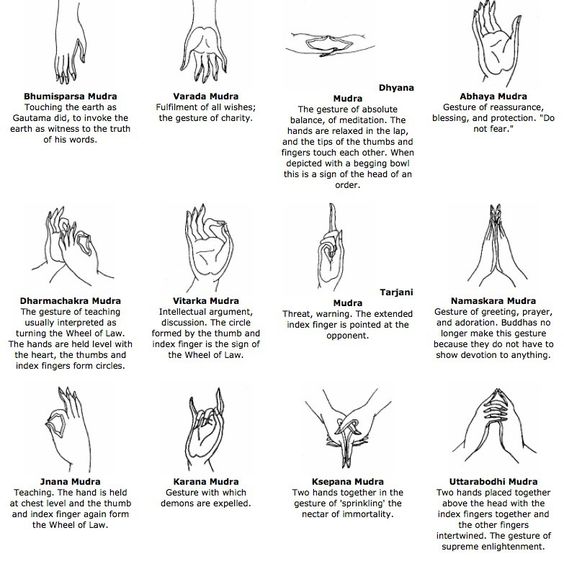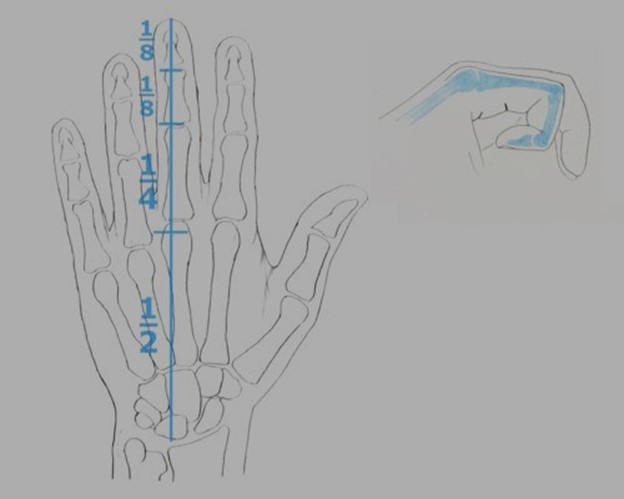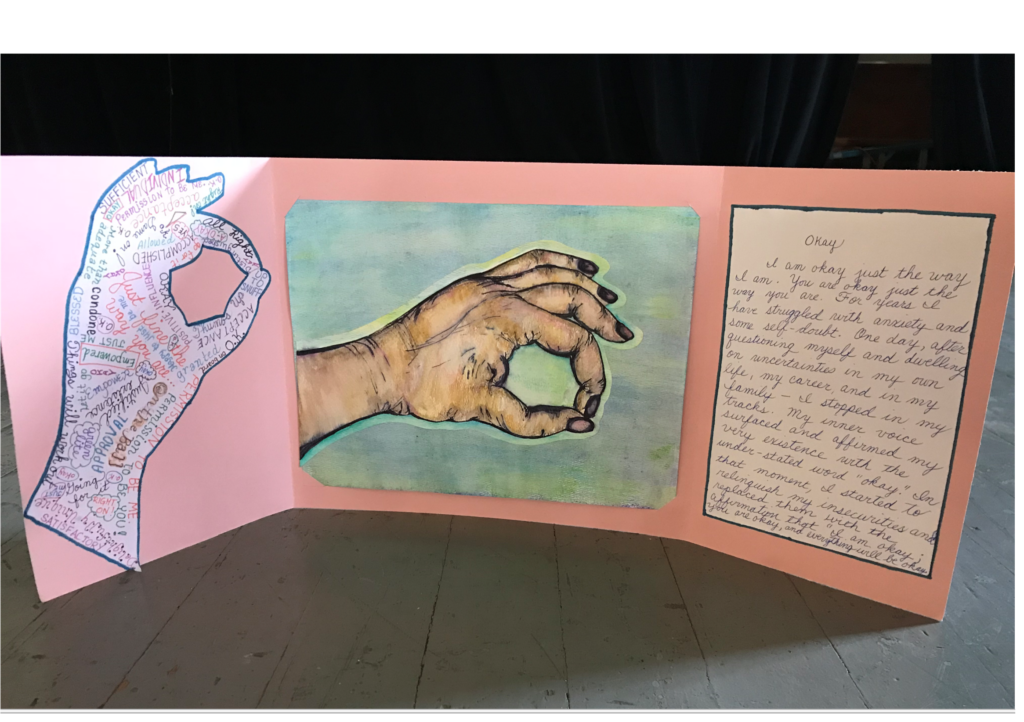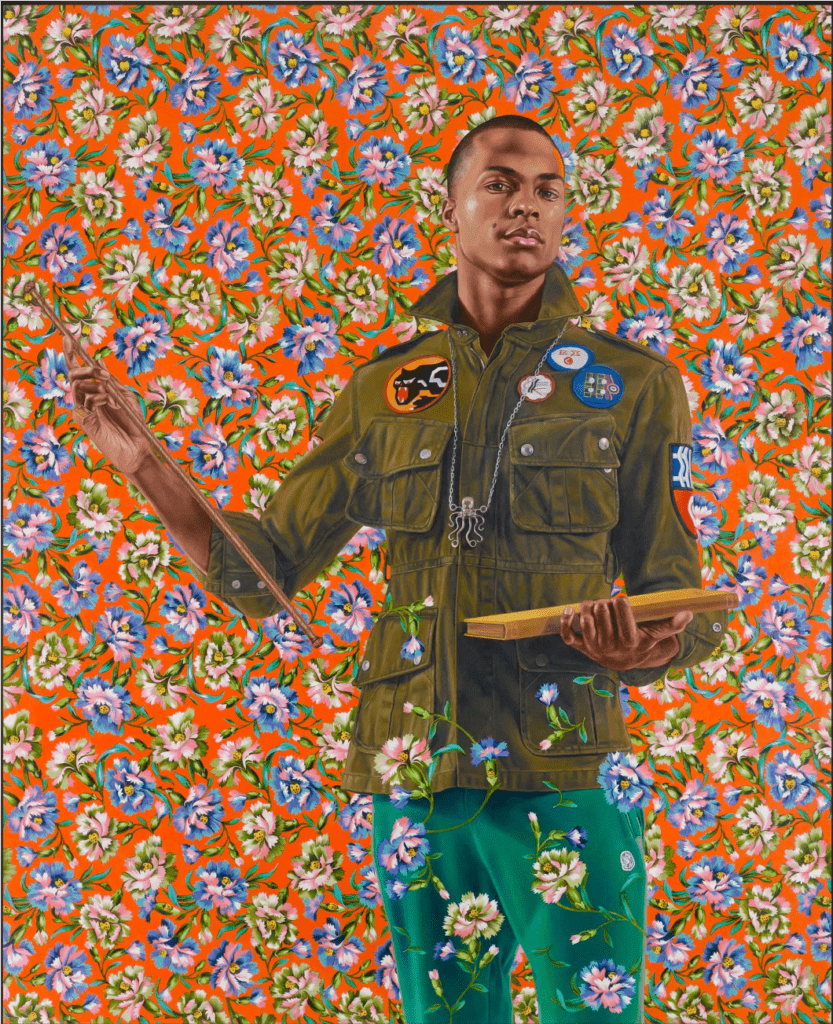
Lesson: The Colors and Shapes of Us: Our Identity is in our Hands
Authors: Beverly Harding Buehler and Meredith Essex
Grade Level: Middle School
Students explore how hands have expressed emotion and identity in art across cultures and history. Through close observation and understanding of proportion, students make a contour drawing of their hand in a pose expressing self. They refine their drawing by defining lines in ink, adding color to match their skin tones, and creating a background. They also create their hand as a calligram (image made of words), then write a personal narrative about an event that shaped their identity and their hand pose.
Below is a simplified outline you can follow from home. You can also download the complete lesson plan.
Lesson Outline
1. Consider/discuss how pose, gesture, color, and shape representing the human hand can express emotion and self.
2. What is “gesture?” How can gesture express emotion and identity?
3. Explore Mudras and other hand gestures in art. Try posing your own hand.


4. Explore the proportions of your own hand. Trace you hand and measure from the base of your palm to the tip of your middle finger. Measure the palm.
5. Make a drawing of your own hand in a gesture of your choice. Take a picture of the gesture to work from if you wish. Add background color and skin tone shading with watercolor pencils.
6. Create a calligram, a picture composed of words, by tracing your hand drawing and filling in the shapes with descriptive words about yourself and your strengths.
7. Write a personal narrative about self identity and your own art called “I am this hand…” Tell the story of a significant event that shaped your self identity and how it is expressed in this hand pose. Include sensory details, calligram words, and your reflection on the event’s importance.

Want more stories like this? Join our list for artistic inspiration, professional development opportunities, resources, and success stories of arts integrated teaching and learning—right in your inbox!


